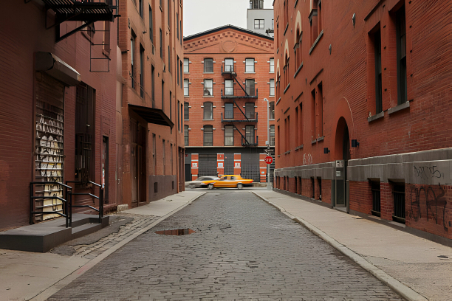Nestled in the heart of Lower Manhattan, Tribeca—short for “Triangle Below Canal Street”—is a neighborhood that encapsulates the essence of New York City’s dynamic blend of history, culture, and modernity. Once an industrial zone characterized by its warehouses and factories, Tribeca has undergone a remarkable transformation over the years to become one of the city’s most sought-after residential areas. Today, it is renowned for its cobblestone streets, loft-style apartments, and a vibrant mix of art galleries, boutiques, and renowned restaurants. This enclave of sophistication and style, however, is not just celebrated for its aesthetic appeal and cultural offerings but also for its reputation as one of the safest neighborhoods in New York City.
This article aims to explore the safety of Tribeca, providing readers with a comprehensive overview of the neighborhood’s security landscape. Through an examination of crime rates, a review of resident and tourist experiences, and a discussion of safety tips, we will delve into what makes Tribeca a secure place to live and visit, while also acknowledging the areas where caution is advised. Join us as we uncover the realities behind Tribeca’s reputation, offering insights into the measures that have shaped it into one of the safest neighborhoods in New York City.
Overview of Safety in Tribeca
Tribeca, once synonymous with New York City’s industrial past, has risen to prominence as one of its safest and most prestigious neighborhoods. This evolution is highlighted by its top ranking among the safest neighborhoods in the city, a testament to the significant strides made in reducing crime over the past two decades. This section delves into the contrasting views on safety, supported by data and analysis, to provide a nuanced understanding of Tribeca’s security landscape.
The Transformation into a Safe Haven
Tribeca’s journey from an industrial area to a beacon of safety is noteworthy. Over the years, focused crime reduction initiatives have led to a dramatic decrease in crime rates. Specifically, crime in Tribeca has dropped by nearly 60% since 2000, illustrating the neighborhood’s commitment to safety and making it one of the most desirable places to live in New York City. This remarkable reduction in crime rates underscores Tribeca’s evolution into a neighborhood where residents and visitors alike can enjoy the rich tapestry of cultural, dining, and recreational experiences with an added sense of security.
A Closer Look at Crime Statistics
Despite its esteemed status as a safe neighborhood, recent analyses offer a different perspective on safety in Tribeca. A report grading Tribeca with an F for safety puts it in the 5th percentile, indicating that 95% of neighborhoods are safer. This suggests a higher rate of crime—81.62 per 1,000 residents per year—compared to many other areas. Such statistics might seem alarming, but they require a deeper understanding of the neighborhood’s dynamics, including its bustling daytime population and the concentration of retail establishments which may inflate crime rates.
The southwest part of Tribeca is considered the safest, demonstrating the variances in safety across different parts of the neighborhood. These variances highlight the importance of contextualizing crime statistics by considering factors like population density and the presence of commercial areas, which can affect perceived and actual safety.
Comparative Safety with Nearby Neighborhoods
When compared to surrounding areas, Tribeca’s crime rates offer a complex picture. Despite reports of higher crime rates within Tribeca, it remains a relatively safe haven in the context of New York City’s broader urban environment. This comparative analysis is crucial for understanding Tribeca’s standing, not in isolation but as part of a larger mosaic of neighborhoods each with their unique safety profiles.
This overview demonstrates that while Tribeca enjoys a reputation as one of New York City’s safest neighborhoods, the reality of safety is multifaceted, influenced by a range of factors from historical crime reduction efforts to the specific characteristics of different parts of the neighborhood. As we peel back the layers of Tribeca’s safety, it becomes clear that the neighborhood embodies the complex interplay between perception and reality that defines urban safety.
Crime Statistics and Analysis
To fully grasp the safety of Tribeca, it’s imperative to delve into the specifics of its crime statistics. This analysis not only sheds light on the types of crimes more prevalent in the area but also helps in understanding the broader safety dynamics that define the neighborhood.
Violent vs. Property Crime
The distinction between violent and property crimes is crucial for a comprehensive safety analysis. In Tribeca, while the overall crime rate might appear elevated in some reports, a breakdown of these figures reveals important nuances. Violent crimes, which include assault, robbery, rape, and murder, have a significantly lower incidence rate in Tribeca compared to property crimes, such as theft, vehicle theft, burglary, and arson. This suggests that residents and visitors are less likely to encounter violent incidents, though the risk of property-related crimes remains a concern.
The rate of violent crimes in Tribeca has been particularly emphasized as low, with a detailed breakdown showing specific rates for assault, robbery, rape, and murder. These statistics underscore the neighborhood’s relative safety in terms of personal security. Property crime rates, on the other hand, include theft, vehicle theft, burglary, and arson, painting a picture of the challenges still faced despite the low violent crime rate.
Crime Distribution and Hotspots
Understanding the distribution of crime within Tribeca reveals that crime rates vary significantly from one part of the neighborhood to another. The southwest part of Tribeca is generally considered the safest, with the chance of being a victim of crime as low as 1 in 28, whereas in the southeast parts, this chance may increase to as high as 1 in 9. Such disparities underscore the importance of geographical nuances within urban safety discussions.
The concentration of crimes in certain areas, particularly around retail establishments, suggests that crime rates may be influenced by the neighborhood’s daytime population swell. This is a critical consideration for both residents and visitors, as it highlights the importance of staying informed about safer areas and times for travel within Tribeca.
Interpreting the Data
The interpretation of crime maps and statistics in Tribeca necessitates a careful consideration of various factors, including the influx of visitors to the area, the presence of commercial establishments, and the density of residential living spaces. Such factors can significantly impact the perceived and actual safety of the neighborhood. Moreover, comparisons with similar-sized neighborhoods reveal that Tribeca’s crime rate is nuanced, requiring a contextual understanding beyond mere numbers.
Resident and Tourist Perspectives on Safety
The safety of Tribeca, as perceived by its residents and tourists, adds a vital dimension to understanding the neighborhood’s security landscape. These firsthand experiences provide insights into the day-to-day reality of living in, visiting, and exploring Tribeca, painting a picture that crime statistics alone cannot fully capture.
Residents’ Sense of Security
The transformation of Tribeca into a highly sought-after residential area is not only a testament to its aesthetic and cultural appeal but also to the perceived safety among those who call it home. Residents of Tribeca generally enjoy a high sense of security, supported by the neighborhood’s low violent crime rate and the visible presence of NYPD patrols. This reassurance is crucial in maintaining the quality of life in an urban setting and contributes significantly to Tribeca’s desirability as a place to live.
The community’s trust in local law enforcement and the effectiveness of crime reduction initiatives further reinforce this sense of security. Many residents appreciate the neighborhood’s quiet streets, proximity to amenities, and the camaraderie among neighbors, which collectively foster a safe and supportive environment.
Tourists’ Safety and Experiences
Tribeca’s charm and safety extend to visitors as well, making it a popular destination for tourists seeking an authentic New York City experience away from the more crowded and hectic tourist hotspots. The neighborhood’s chic shops, art galleries, and upscale dining options attract a diverse crowd, with many tourists noting the area’s vibrant yet relaxed atmosphere. The presence of NYPD officers and safety tips provided by local businesses and tourism websites contribute to a reassuring environment for those exploring Tribeca.
The general advice for tourists includes staying in well-lit areas at night, using reputable transportation services, and being mindful of their surroundings, especially when enjoying the nightlife. These precautions, common to urban travel, are particularly relevant in Tribeca, where the mix of residential and commercial spaces creates a unique urban fabric.
The Role of Community and Infrastructure
The safety of Tribeca is also reflected in its urban design and community initiatives. The neighborhood boasts several parks and playgrounds, well-maintained streets, and a range of public services that contribute to a safe and welcoming environment. Community-led efforts, such as neighborhood watch programs and local events, enhance the sense of belonging and collective responsibility for safety.
Furthermore, the emphasis on pedestrian-friendly streets and the availability of public transportation options reduce the reliance on late-night walks, minimizing potential safety risks for both residents and visitors. The integration of safety into the urban planning and community ethos of Tribeca underscores its status as a neighborhood where safety and quality of life are prioritized.
Conclusion
For residents, Tribeca offers a peaceful sanctuary amidst the city’s chaos, where the sense of community and the visible measures of safety foster a high quality of life. Tourists, drawn to its historic streets and modern attractions, find reassurance in the neighborhood’s welcoming atmosphere and the proactive safety tips provided by both locals and authorities.

Born and raised amidst the hustle and bustle of the Big Apple, I’ve witnessed the city’s many exciting phases. When I’m not exploring the city or penning down my thoughts, you can find me sipping on a cup of coffee at my favorite local café, playing chess or planning my next trip. For the last twelve years, I’ve been living in South Williamsburg with my partner Berenike.

